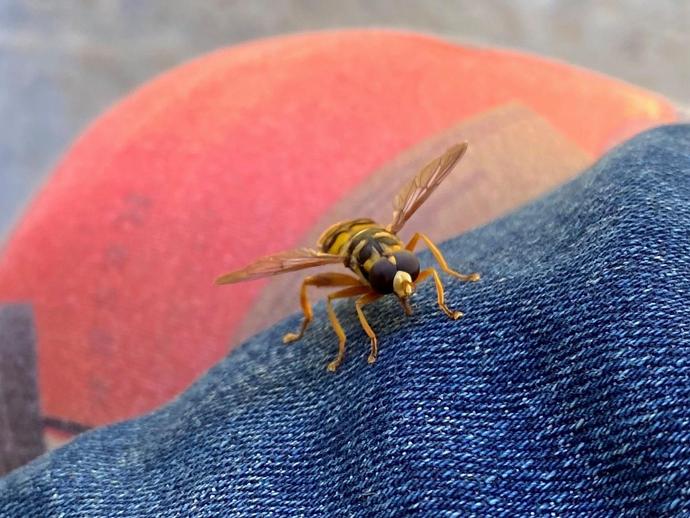October 7, 2020
It's time for another #BenInNature update! I was sitting on my back porch yesterday when this Virginia flower fly (Milesia virginiensis) came to visit, first by hovering near me and staring at me intently, then by landing on the sleeve of my jacket. While it may look like a yellowjacket at first glance (and is sometimes known as a "yellowjacket hoverfly"), these little guys are perfectly harmless!
The Virginia flower fly is a hoverfly in the family Syrphidae, and the adults spend their time feeding on nectar and pollen from flowers. There are more than 6,000 species of hoverflies around the world, but virtually all of them have one thing in common: they look like stinging insects, but they don't have stingers themselves! This mimicry helps protect them from predators. One of the easiest ways to tell the difference between a hoverfly and a yellowjacket is the number of wings; hover flies have just two wings while yellowjackets have four.
According to bugguide.net, in the south, the Virginia flower fly is sometimes called the "good news bee" because it has a habit of hovering in front of you as though it's "giving the news." It's also said to be good luck if you can get one to perch on your finger. I wasn't aware of this at the time I saw this one, but maybe it transferred some luck when it landed on my jacket.
If you see a hover fly, you should definitely just leave it be because these guys are great allies to have in the garden. In addition to being active pollinators, some species of hoverfly eat aphids! The Virginia flower fly is active through November in southwest Virginia, so if you'd like to spot one yourself, there's still plenty of time.
ABOUT #BenInNature
Social distancing can be difficult, but it presents a great opportunity to become reacquainted with nature. In this series of posts, Administrator of Science Ben Williams ventures outdoors to record a snapshot of the unique sights that can be found in the natural world. New updates are posted Monday - Friday, with previous posts highlighted on the weekends.
NATURE PHOTO IDENTIFICATIONS
If you discover something in nature that you would like help identifying, be sure to message us right here on Facebook with a picture (please include location and date of picture) and we'll have our experts help you identify it!

 Hours & Admissions
Hours & Admissions Directions
Directions

